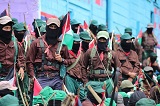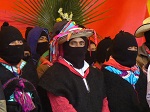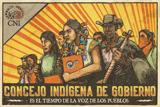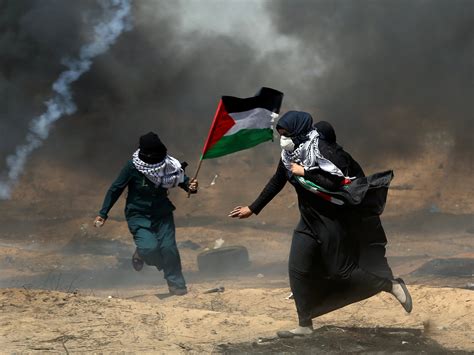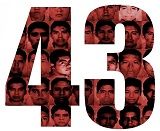
(Español) Ante uso excesivo de la fuerza pública, ONGs exigen destitución del Secretario de Seguridad Pública del Estado de Guerrero
– Imprescindible hacer una investigación imparcial, expedita y efectiva de la violencia policiaca.
– Exigimos sanción a los responsables y condenamos el asesinato de normalistas.
El uso irracional y arbitrario de las fuerzas de seguridad pública, derivó en la privación de la vida de 2 estudiantes de la Normal Rural Isidro Burgos de Ayotzinapa, Guerrero. El uso excesivo de la fuerza pública de manera arbitraria, es un acto a todas luces reprobable, y del cual debe haber sanción a los responsables.
Las acciones realizadas por elementos de la Policía Federal y de la Policía Ministerial de Guerrero derivaron en la consumación de privaciones arbitrarias de la vida de dos estudiantes, dichos asesinatos deberán tener una investigación expedita, imparcial y efectiva.
Hasta este momento, se desconoce el paradero de 40 normalistas, 3 estudiantes se encuentran heridos y 26 más detenidos.
En este sentido, las acciones de brutalidad policiaca y uso irracional de la fuerza pública en contra de jóvenes manifestantes de una normal rural dedicada a poner la educación al alcance de los más marginados, constituye un acto inadmisible en un contexto democrático, y echa por tierra el compromiso del actual gobierno de atender los conflictos sociales en sus causas más estructurales evitando el uso de la fuerza pública.
Exigimos que se esclarezca quién ordenó la actuación desmedida e irracional de los cuerpos de seguridad pública contra estudiantes, cuyo único objetivo había sido iniciar una nueva movilización para abrir canales de diálogo con el gobierno estatal, lo que lamentablemente no ocurrió, detonando en los hechos de esta mañana.
Cabe resaltar que la Normal Rural Raúl Isidro Burgos, de Ayotzinapa, Guerrero, se ha destacado por mantener un compromiso histórico con la educación de los más desposeídos del estado de Guerrero, principalmente de las y los alumnos indígenas y campesinos, caracterizándose en años recientes por su capacidad de generar una propuesta renovadora de la educación rural en la entidad.
Exigimos la destitución del Secretario de Seguridad Pública del Estado de Guerrero, Ramón Almonte Borja, con lo cual se pueda garantizar una investigación exhaustiva y efectiva de la agresión que sufrieron los estudiantes
ATENTAMENTE,
Red Guerrense de Organismos Civiles de Derechos Humanos; Radio Comunitaria y Educativa Uan Milahuak Tlajtoli en Chilapa Guerrero; Centro de Análisis e Investigación “Fundar”; Instituto para la Seguridad y la Democracia-Insyde; Monitor Civil de la Policía y de las Fuerzas de Seguridad de La Montaña de Guerrero; Red Nacional de Organismos Civiles de Derechos Humanos “Todos los Derechos para Todos y Todas”, conformada por 75 organizaciones en 22 estados de la República: Agenda LGBT (Distrito Federal, Asistencia Legal por los Derechos Humanos, A.C. (Distrito Federal); Asociación Jalisciense de Apoyo a los Grupos Indígenas, A.C. (Guadalajara, Jal.); Asociación para la Defensa de los Derechos Ciudadanos “Miguel Hidalgo”, A.C. (Jacala, Hgo.); Casa del Migrante Saltillo (Coahuila), Católicas por el Derecho a Decidir, A.C. (Distrito Federal); Centro “Fray Julián Garcés” Derechos Humanos y Desarrollo Local, A. C. (Tlaxcala, Tlax.); Centro de Apoyo al Trabajador, A.C. (Puebla, Pue.); Centro de Derechos Humanos “Fray Bartolomé de Las Casas”, A. C. (San Cristóbal de Las Casas, Chis) ; Centro de Derechos Humanos “Fray Francisco de Vitoria O.P.”, A. C. (Distrito Federal); Centro de Derechos Humanos “Miguel Agustín Pro Juárez”, A. C. (Distrito Federal); Centro de Derechos Humanos “Don Sergio” (Jiutepec, Mor.); Centro de Derechos Humanos “Fray Matías de Córdova”. A.C. (Tapachula, Chis); Centro de Derechos Humanos de la Montaña, Tlachinollan, A. C. (Tlapa, Gro.); Centro de Derechos Humanos de las Mujeres (Chihuahua), Centro de Derechos Humanos, “Juan Gerardi” , A. C. (Torreón, Coah.); Centro de Derechos Humanos Ñu’u Ji Kandií, A. C. (Tlaxiaco, Oax.); Centro de Derechos Humanos Paso del Norte (Cd. Juárez), Centro de Derechos Humanos Solidaridad Popular, A.C. (Monterrey, N.L.); Centro de Derechos Humanos Tepeyac del Istmo de Tehuantepec, A. C. (Tehuantepec, Oax); Centro de Derechos Humanos Victoria Diez, A.C. (León, Gto.); Centro de Derechos Indígenas “Flor y Canto”, A. C. (Oaxaca, Oax.); Centro de Derechos Humanos Toaltepeyolo (Tlilapan, Veracruz); Centro de Derechos Indígenas A. C. (Bachajón, Chis.); Centro de los Derechos del Migrante (Zac. Zacatecas); Centro de Estudios Fronterizos y Promoción de los Derechos Humanos, A. C. (Reynosa, Tamps.); Centro de Justicia para la Paz y el Desarrollo, A. C. (CEPAD) (Guadalajara, Jal.); Centro de Reflexión y Acción Laboral (CEREAL-DF) (Distrito Federal); Centro de Reflexión y Acción Laboral (CEREAL-Guadalajara) (Guadalajara, Jal.); Centro Diocesano para los Derechos Humanos “Fray Juan de Larios”,A.C. (Saltillo, Coah.); Centro Juvenil Generando Dignidad (Comalcalco, Tabasco); Centro Hermanas Mirabal de Derechos Humanos (León, Gto.), Centro Mexicano de Derecho Ambiental (Distrito Federal), Centro Mujeres (La Paz, BC.), Centro Regional de Defensa de DDHH José María Morelos y Pavón, A. C. (Chilapa, Gro.); Centro Regional de Derechos Humanos “Bartolomé Carrasco”, A. C. (Oaxaca, Oax.); Ciencia Social Alternativa, A.C. – KOOKAY (Mérida, Yuc.); Ciudadanía Lagunera por los Derechos Humanos, A. C. (CILADHAC) (Torreón, Coah.); Ciudadanos en Apoyo a los Derechos Humanos, A. C. (Monterrey, NL); Colectivo Educación para la Paz y los Derechos Humanos, A.C. (San Cristóbal de Las Casas, Chis.); Colectivo contra la Tortura y la Impunidad (Distrito Federal); Comité Cerezo (Distrito Federal); Comisión de Derechos Humanos “La Voz de los sin voz” (Coyuca de Benítez, Gro.); Comisión de Derechos Humanos y Laborales del Valle de Tehuacan, A.C. (Tehuacan, Pue.); Comisión de Solidaridad y Defensa de los Derechos Humanos, A. C. (Chihuahua, Chih.); Comisión Independiente de Derechos Humanos de Morelos, A. C. (CIDHMOR) (Cuernavaca, Mor.); Comisión Intercongregacional “Justicia, Paz y Vida” (Distrito Federal); Comisión Parroquial de Derechos Humanos “Martín de Tours”, A.C. (Texmelucan, Pue.); Comisión Regional de Derechos Humanos “Mahatma Gandhi”, A. C. (Tuxtepec, Oax.); Comité de Defensa de las Libertades Indígenas (Palenque, Chis.); Comité de Derechos Humanos Ajusco (Distrito Federal); Comité de Derechos Humanos “Fr. Pedro Lorenzo de la Nada”, A. C. (Ocosingo, Chis.); Comité de Derechos Humanos “Sembrador de la Esperanza”. A. C. (Acapulco, Gro.); Comité de Derechos Humanos “Sierra Norte de Veracruz”, AC. (Huayacocotla, Ver.); Comité de Derechos Humanos de Colima, No gubernamental, A. C. (Colima, Col.); Comité de Derechos Humanos de Comalcalco, A. C. (Comalcalco, Tab); Comité de Derechos Humanos de Tabasco, A. C. (Villahermosa, Tab); Comité de Derechos Humanos y Orientación Miguel Hidalgo, A. C. (Dolores Hidalgo, Gto.); Comité Sergio Méndez Arceo Pro Derechos Humanos de Tulancingo, Hgo AC (Tulancingo, Hgo.); Frente Cívico Sinaloense. Secretaría de Derechos Humanos. (Culiacán, Sin.); Indignación, A. C. Promoción y Defensa de los Derechos Humanos (Chablekal, comisaría del municipio de Mérida, Yuc.); Iniciativas para la Identidad y la Inclusión A.C. (Distrito Federal); Instituto Guerrerense de Derechos Humanos, A. C. (Chilpancingo, Gro.); Instituto Mexicano de Derechos Humanos y Democracia (Distrito Federal); Instituto Mexicano para el Desarrollo Comunitario, A. C. (IMDEC), (Guadalajara, Jal.); Instituto Tecnológico y de Estudios Superiores de Occidente, – Programa Institucional de Derechos Humanos y Paz. (Guadalajara, Jal.); Oficina de Defensoría de los Derechos de la Infancia A.C. (Distrito Federal), Programa de Derechos Humanos. Universidad Iberoamericana-Puebla (Puebla, Pue); Programa Universitario de Derechos Humanos. UIA –León (León, Gto.); Proyecto de Derechos Económicos, Sociales Y Culturales (Distrito Federal); Promoción de los Derechos Económicos, Sociales y Culturales (Estado de México); Respuesta Alternativa, A. C. Servicio de Derechos Humanos y Desarrollo Comunitario (San Luis Potosí, S.L.P.); Servicio, Paz y Justicia de Tabasco, A.C. (Villahermosa, Tab.); Servicio, Paz y Justicia, México (SERPAJ-México) (Comalcalco, Tab.); Servicios de Inclusión Integral, A.C. (Pachuca, Hidalgo); Taller Universitario de Derechos Humanos, A. C. (Distrito Federal).



